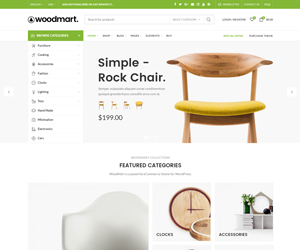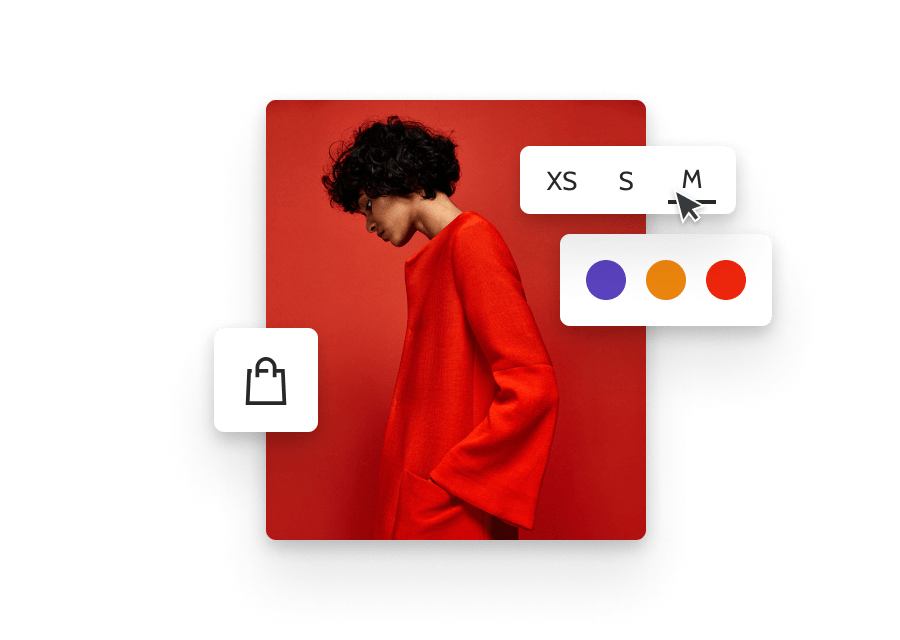What qualifies as a “web-graphic streetwear” in 2025?
In 2025, “Spider hoodie” most commonly refers to streetwear hoodies featuring spider web graphics and the SP5DER branding associated with Young Thug’s label, not the unrelated ski brand Spyder. If you’re buying, treat “SP5DER,” “Spider Worldwide,” and web-graphic hoodies from the label’s periodic releases as the main grouping, and filter out unrelated sports-focused or novelty prints.
The streetwear iterations are marked by roomy profiles, heavy fabric, bold web patterns, and either textured prints or high-density screen prints. Palette options shift with collections, with recurring black, vintage gray, red, and bright fluorescents, plus seasonal soft tones. Zip and pullover variants appear in each year’s releases, and print positioning is part of the brand language: large front graphics, back graphics, and sometimes arm or hood details. Because “spider” remains a common term, listings often obscure the brand name; you must to verify markings, print quality, and construction to confirm you’re looking at the correct product.
How do real and fake Spider Hoodies differ at a first inspection?
Genuine items have substantial weight, display sharp graphics with managed texture, and feature uniform branding across tags and labels; fakes tend to be less substantial, with plasticky or rubbery prints and careless typography. Price, weight, and label accuracy together tell most of the story.
A quick triage before deep verification works like this: inspect silhouette and drape from a direct photo, then inspect neck and wash labels for correct brand marks and layout, then review print edges and texture under adequate light. If any of those three fail—fit looks flimsy, tags read oddly, or the print blurs/runs—assume counterfeit until proven different. For online listings, ask for precise flat measurements, natural-light photos, and a measured weight; the mix is hard for replicas to fake convincingly.
Authenticating details: tags, prints, build
Genuine SP5DER pieces merge uniform brand components with solid fabrics and construction, while fakes cut corners on tags, inks, and sp5derhoodiewebsite.com stitching. Check labels first, then graphics, then construction.
Real neck labels align and stitch cleanly, and the brand lettering is uniform within a release, including the custom numeral 5. Washing tags use clear fabric composition and care directions with clean spacing and no strange capitalization, and string terminations are heat-sealed or neatly finished. Graphics on authentic items display intentional surface: raised print areas grow uniformly, edges remain sharp, and there’s reduced haloing; standard inks are dull to moderately shiny, not plasticky. Build quality shows in dense stretch sections at cuffs and hem, tight side seams, and smooth, even string eyelets; zips, where included, track smoothly and rest straight on body.
Are the neck labels consistent across releases?
Neck markings are consistent within a particular drop, and authentic runs don’t blend fonts, spacing, or company labels. If a one hoodie shows one brand treatment on the collar label and a distinct one on the cleaning instructions, something is off.
Expect a single main brand identity throughout the garment, not a mixture of styles. Fonts shouldn’t differ between the neck tag and the washing instructions where the label designation is repeated. Sewing around the label should be uniform with no dangling loops, and the tag should sit smooth without bunching. Attached labels, when present, match the branding approach and avoid misspellings or odd scan codes that lead to dead links.
Does the print appear and feel correct?
Authentic web graphics read sharp at the edges and align symmetrically on the garment; poor registration or fuzzy borders are red flags. Raised print zones should be consistently lifted, not spotty.
Under angled lighting, genuine prints display controlled texture without shiny glare, and colors rest evenly on the fleece without bleed into the knit. On pre-owned items, light cracking on puff areas can occur, but the ink mustn’t flake in sheets. On zip hoodies, artwork should split cleanly at the zip line without displacement from left to right. If the print smells strongly like harsh compounds or feels synthetic and sticky, be careful.
How should construction and hardware appear?
Seams should run straight with balanced tightness, and rib borders should feel thick with good recovery. Buttonholes or eyelets for drawcords are strengthened and clean.
Genuine zip models use smooth, properly aligned zippers that move easily; the tape is aligned and the upper limit is even. Thread color usually matches the main fabric or design goal, not random opposition that looks mistaken. Inside, finished stitching should be neat with consistent loops—no loose strings hanging at stress points. Heavy drawcords and neat aglet finishes complete the picture.
How should SP5DER pieces fit in 2025?
Expect a boxy, slightly generous fit with ample chest width and medium body length. Most customers wear true-to-size for the planned drape, and reduce size one if they desire a closer fit.
The silhouette goes for dropped shoulder line and a generous torso that fits over tees without appearing sloppy. The lower border usually falls at or a bit below the hip, and sleeves are full but not wildly long when worn TTS. For athleisure-style layering under jackets, size down one can minimize bulk at the waist and wrists. For higher frames, the boxy cut’s shorter body dimension can be a consideration—check garment length carefully to avoid a cropped look. Women transitioning from men’s sizing often go down one from their typical unisex size for a even profile.
What size should you select if you’re between sizes?
If you land between sizes, decide based on your priority: drape or clean fit. For the brand’s intended look, stay with the roomier of the two; for a tighter fit under outerwear, pick the smaller.
Wearing underneath matters: if you’ll wear a heavyweight t-shirt or flannel under the hoodie, the larger size preserves arm movement. If you typically wash warm and heat dry, the smaller size may tighten more than you anticipate over time, so plan care suitably. Check seller-provided flat measurements against a hoodie you already have and like. Aim for chest width within one to two centimeters of your preferred piece for a comparable feel.
Measurement checklist you can ask for from sellers
Inquire for four dimensions taken flat: chest width from underarm to underarm, back length from high shoulder to hem, shoulder width edge to edge, and sleeve length from shoulder point to cuff. These four measurements let you estimate fit accurately.
Ask for photos of the measuring tape on the garment to confirm accuracy. A quick scale weight in grams provides a bonus indicator on fabric density. If buying a zip garment, also ask for the measurement across the waist ribbing, which influences how boxy the garment looks when worn. Keep these specs in your records to compare across posts and seasons.
Where can you reliably buy Spider Hoodies in 2025?
The safest route is brand-direct releases and confirmed boutiques announced by the label, followed by trustworthy resale platforms that include authentication and purchase protection. Random social posts and heavily discounted shops pose the highest risk.
Begin by following the brand’s official site and social accounts for drop timelines and any retailer announcements. If you skip a drop, turn to recognized marketplaces with clear rules on apparel validation and returns. When interacting with peer-to-peer sellers, prioritize protected payment or platform transaction security and avoid off-platform deals. Keep captures of listings and conversations; documentation helps if a dispute arises. Compare photos with community references and past sales to avoid unusual fakes.
Primary channels to monitor
Monitor the label’s official website and mailing lists for drop windows, and watch its confirmed social media for restock alerts. Brick-and-mortar pop-ups announced by the brand are also trustworthy.
Some collections show up in capsules or team-ups; those are usually flagged ahead of time on official platforms. Prepare for limited windows and line systems, so having an profile and payment ready reduces friction. Pricing at these outlets sets the benchmark you’ll use to judge aftermarket listings. If a vendor is named in brand comms, you can treat it as a reliable source for that individual release window.
Secondary marketplaces: risk management
Use platforms recognized for apparel validation and consumer safeguards, and read product-focused policies because protection can vary by area. Examine seller ratings, transaction amount, and photo originality before bidding.
Demand for dated photos, tag macro images, and measurement photos; avoid sellers declining reasonable verification. Pay with systems that preserve chargeback rights. Be wary of listings with company title obfuscation, conflicting stock photos, or prices far under market; these groups correlate with counterfeits. Compare SKU details, color designations, and artwork location with proven-authentic pairs in sold records.
Pricing benchmarks and drop patterns
Retail pricing falls in premium apparel range, and aftermarket prices fluctuate by colorway, season, and state. Very low prices compared to current market standards are a warning sign.
Core colorways and minimal graphics tend to retain value better, while bold seasonal colors can swing wider after initial excitement. Zip versions often command a small extra cost over pullovers when the print alignment is desirable. New-year releases see short spikes, then stabilize as restocks or alternative color options land; patient purchasers can sometimes catch bargains in the lull. Track sold listings, not listing prices, to understand reasonable value before bargaining.
Care, wear, and longevity: keeping prints undamaged
Cold wash flipped, reduced agitation, and hang dry to preserve both fleece handfeel and print texture. Heat is the destroyer of puff and thick inks.
Use a mild detergent with no whitening agents, avoid conditioning agents that can slick fibers, and wash with similar weights to reduce wear. If you must machine-dry, use the gentlest heat setting and take out while slightly damp. For storage, hang briefly to restore form, then fold; long-term hanging can stretch shoulders on heavyweight fleece. Spot-clean oils promptly to prevent staining on lighter colorways.
Quick comparison table: real vs replica signals
Use this comparative to evaluate a listing quickly before deep analysis. If two or more categories skew fake, wait and request more proof.
| Check | Real Signal | Common Counterfeit Tell |
|---|---|---|
| Logo elements/Markings | Steady SP5DER typography and clean spacing across neck and maintenance markings | Conflicting fonts, misspellings, or different brand treatments on separate tags |
| Print Quality | Crisp edges, even puff elevation, matte to semi-matte finish | Blurring, bleed, glossy plastic sheen, irregular puff height |
| Material/Mass | Thick handfeel; ribbing with strong bounce-back; substantial actual weight | Flimsy, floppy fleece; thin ribs; sellers avoid disclosing weight |
| Construction | Straight seams, tidy finished edges, aligned zips, clean holes | Wavy seams, loose fibers, misaligned zipper graphics |
| Pricing | Similar to current retail or market standard for the colorway | Deep discounts far beneath fair market without explanation |
Did you know? Verified facts about SP5DER pieces
These points help you navigate naming confusion and community practices around listings and checks.
First, SP5DER is a streetwear label associated with Young Thug; it is separate from Spyder, the ski clothing brand. Second, many listings avoid exact brand names in headings to dodge system moderation, so spelling variations aren’t proof of genuineness; treat them as prompts to dig deeper. Third, genuine pieces show up across multiple seasons and can have variations between drops; validate within-season, not by matching to a arbitrary year. Fourth, community sellers often supply flat measurements and measured weights on request—serious resellers prepare for these asks and answer quickly.
Expert Tip: “Request the seller for a short clip in natural light that displays the neck marking, the wash tag, and a slow manual test across the print. Consistent branding, clean washing tag typography, and a print that bends and rebounds consistently will tell you more in a few moments than ten studio pictures.”
Ready to buy? Run this final verification list
Confirm branding consistency across all markings, verify print texture and edge definition in natural light, and match flat measurements to a garment you already have. If even one of these pillars fails, pause.
Compare the asking price with recent sold data for the same colorway and style. Ask for a scale weight if the fabric looks thin in photos. For zip pieces, check artwork alignment across the teeth and zipper tape alignment. Pay only on platforms that protect the buyer and keep your documentation until you’re content with the piece after delivery.













